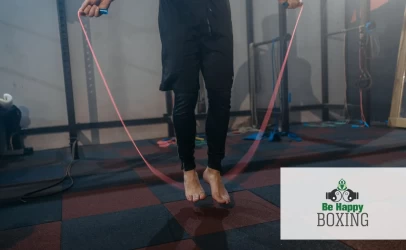Boxing and Karate are two of the most popular combat sports worldwide, each with unique histories, techniques, and philosophies, which is why you may be wanting to put in a scale karate vs. boxing.
Whether you’re looking to start a new fitness journey or simply curious about the differences between these two disciplines, understanding their key elements can help you decide which is right for you.
Key Takeaways
- Origins and Philosophy: Boxing, one of the oldest combat sports, originated in ancient Greece and evolved into its modern form in 18th-century England, emphasizing offense and defense using punches. In contrast, karate originated in Okinawa, Japan, blending martial arts with a philosophy centered on discipline, respect, and self-control.
- Techniques and Movements: Boxing focuses solely on punches, including jabs, hooks, uppercuts, and defensive footwork. Karate offers a wider range of techniques, including punches, kicks, knee strikes, and open-hand moves like chops, with an emphasis on precision, balance, and muscle memory through choreographed patterns called katas.
- Training Focus: Boxing training prioritizes cardiovascular fitness, strength, speed, and agility through drills like sparring and bag work. Karate training is more diverse, incorporating physical conditioning, technical drills, sparring, and mental training through meditation and breathing exercises.
Origins and Philosophy
Boxing originated in ancient Greece, which makes it one of the oldest known combat sports. However, modern boxing as we know it developed in the 18th century in England and has become one of the most popular fighting styles globally.
This sport is straightforward and primarily focuses on offense and defense using punches. The philosophy centers around strength, agility, and strategy within a ring.
On its hand, karate, which means “empty hand,” originated in Okinawa, Japan, and was influenced by Chinese martial arts. Its roots are deeply embedded in discipline, self-control, and respect for others.
Karate is more than just fighting; it’s a way of life that emphasizes mental strength and self-improvement as much as physical skill.
Karate Vs. Boxing: Techniques and Movements
Let’s discuss boxing techniques. This sport involves using fists to strike an opponent while focusing on footwork, speed, and defense.
Techniques include jabs, hooks, uppercuts, and crosses. Boxers are trained to use body movement and positioning to evade punches, making agility and endurance key components of the sport.
However, boxers are restricted to punches and cannot use kicks, elbows, or any other parts of the body to strike, while in karate it is allowed.
Karate is a versatile martial art that includes punches, kicks, knee strikes, elbow strikes, and open-hand techniques like chops. It also incorporates blocking and evading moves to defend against attacks.
Karate techniques are often practiced in patterns called katas, which are choreographed sequences that simulate fighting multiple opponents. These katas help practitioners develop precision, balance, and muscle memory.

Training Focus
Training in boxing is intense and heavily focused on cardiovascular fitness, strength, speed, and reaction time. Boxers spend a lot of time on heavy bag work, sparring, and shadowboxing to hone their skills.
Training often includes conditioning drills like jump rope, running, and weightlifting to improve overall athletic performance.
Karate training is more diverse, involving physical conditioning, technical drills, katas, sparring (kumite), and self-defense techniques. Karatekas (karate practitioners) also engage in mental training through meditation and breathing exercises to enhance focus and calmness under pressure.
Flexibility and balance are emphasized, and techniques are often performed slowly at first to perfect form before increasing speed and power.
Is Karate Better Than Boxing?
This is an interesting question. Boxing offers an excellent workout that builds cardiovascular endurance, strength, and coordination. It’s also great for stress relief, boosting confidence, and teaching practical self-defense skills.
Boxing is known for improving hand-eye coordination, speed, and mental toughness. But, can boxing beat karate?
Karate improves flexibility, balance, and overall fitness while teaching self-discipline and respect. It provides a full-body workout and helps develop coordination, agility, and focus. Karate also offers a philosophical approach to self-defense, emphasizing the importance of avoiding conflict and using force only when necessary.
Which One Is Right for You?
Choosing between boxing and karate depends on your personal goals and interests:
- If you’re looking for a straightforward, intense workout that focuses on punching techniques and conditioning, boxing may be the better choice.
- If you prefer a martial art that combines striking, kicking, and a philosophical approach to self-defense, karate might be more suitable.
Both sports provide unique benefits and can improve your physical and mental well-being. Whether you want to get fit, learn self-defense, or embrace a new discipline, boxing, and karate offer valuable skills that go beyond the gym or dojo.
Are you ready to step into the ring or dojo? Explore these combat sports, and discover which path aligns best with your fitness journey and personal growth!
Summary
Boxing and karate are distinct combat sports with unique techniques, philosophies, and training focuses. Boxing, known for its straightforward punching style and emphasis on strength and agility, offers a rigorous workout ideal for those seeking intense physical conditioning and practical self-defense. Karate, with its broader range of strikes and philosophical approach, emphasizes flexibility, mental discipline, and self-improvement. Your choice between boxing and karate depends on your fitness goals and personal preferences—whether it’s the strategic power of boxing or the holistic discipline of karate.
Frequently Asked Questions
What is the difference between amateur and professional boxing?
Amateur boxing is typically seen in competitions like the Olympics, focusing on points scored through clean punches. Professional boxing involves longer rounds, no headgear, and places more emphasis on knockouts and overall performance. The training intensity and financial rewards are also higher in professional boxing.
What are the different belt colors in karate, and what do they signify?
Belt colors in karate signify the student’s rank and progression, starting from white (beginner) to black (expert). The colors often follow a progression like white, yellow, orange, green, blue, brown, and black, with each belt representing a higher level of skill, knowledge, and discipline.





